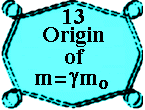 Frequently Asked Questions
Frequently Asked Questions
about
Theories and Theories
 Frequently Asked Questions
Frequently Asked Questions
Series #5 - Theories and TheoriesGo to: Previous series of questions
A. - In order to understand the physics of
relativity, we must understand the main physical mechanism
that is responsible for "length contraction" and "time
dilation". Do you know which physical mechanism intervene in
the atoms of matter (or elsewhere) so that lengths are
contracted and time is dilated? Nobody knows. That is the
reason for which Einstein said that nobody understands
relativity (even if we can make numerical predictions).
Including Gerber and Einstein, absolutely none of the eleven
authors above give a clue. However, I heard this question
repeated so many times by hundreds of people. Anyhow, length
contraction and time dilation are considered as the basic
phenomena in relativity even if we do not know what happens.
We
can
calculate
predictions
of
relativistic
phenomena as suggested by the authors above, but no author
ever really explained what happens to the atoms. We must
conclude that we do not know what is going on.
REFERENCE
1-
Die
Räumliche und zeitliche Ausbreitung der Gravitation. Von
Paul Gerber. Zeitschrift für Mathematik und Physik Vol.
43, Pages 93-104 (1898).
Also: Paul Gerber, Die
Fortplfanzungsgeschwindigkeit der Gravitation, Annalem der
Physik, Vol 52, p. 415-444, 1917
<><><><><><><><><><><><>
 -
- - -
- - -
- -
-
<><><><><><><><><><><><><>
theories-5.html
Updated Sept. 1999